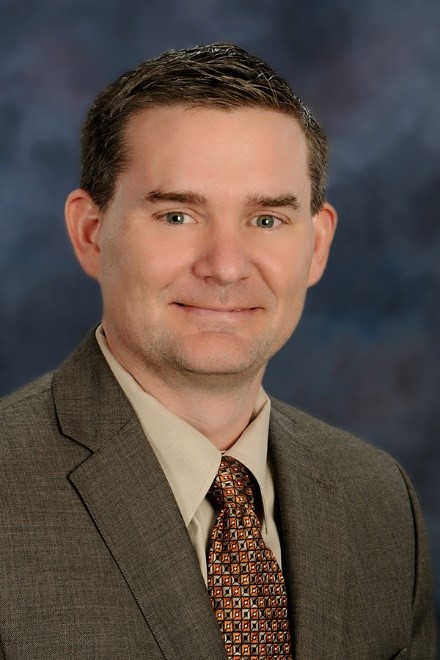
St. Luke’s transforms clinical collaboration with Microsoft 365 cloud-connected workplace

Today’s post was written by Chad Brisendine, Chief Information Officer at St. Luke’s University Health Network.
 In 10 years at St. Luke’s University Health Network, I’ve seen that this organization’s passion for transformation remains as vital today as it was a decade ago. I am lucky to work in a caring, people-centric environment where IT enjoys a close relationship with operations: we have a saying that St. Luke’s is “operationally led and IT supported.” IT is meeting unique challenges as we help improve patient care, manage costs, address regulatory changes, and provide consumer-friendly patient services. At St. Luke’s, we’re answering those challenges with a cloud-first approach.
In 10 years at St. Luke’s University Health Network, I’ve seen that this organization’s passion for transformation remains as vital today as it was a decade ago. I am lucky to work in a caring, people-centric environment where IT enjoys a close relationship with operations: we have a saying that St. Luke’s is “operationally led and IT supported.” IT is meeting unique challenges as we help improve patient care, manage costs, address regulatory changes, and provide consumer-friendly patient services. At St. Luke’s, we’re answering those challenges with a cloud-first approach.
We use Microsoft 365, Azure, and Dynamics 365 to drive speed and agility in clinical, administrative, and back-end environments across St. Luke’s. The common cloud platform will pay off in reducing duplicate applications—consolidating systems will reduce costs and improve usability for our employees. We’ll also save resources by taking advantage of productivity and automation opportunities. I anticipate a 20 to 30 percent productivity increase when everyone uses the same cloud-connected apps.
We are modernizing clinical and administrative work environments at St. Luke’s through our Microsoft products—for all 17,000 employees. These productivity tools include all the capabilities we need—messaging, conferencing, and live recordings, and are enhanced by applications like Microsoft Planner and Stream: the video service in Office 365. Microsoft Shifts will be a boon for clinical staff who can use this scheduling platform to connect with on-call specialists.
Our vision for Microsoft Teams, a digital hub for collaboration and patient care, is exciting. Clinicians will carry a smartphone loaded with the mobile app to accelerate communication among colleagues. Clinicians are naturally collaborative and communicating quickly in a “digital huddle” will expedite their decisions on treatment protocols, improving health outcomes for patients. Thanks to the unified interface, clinicians will spend less time navigating different systems and more time with their patients—this will also simplify the transfer of patient data between caregivers on different shifts.
We’re able to work at the forefront of clinical care because Microsoft 365 makes it easier for IT to provide a highly secure, compliant digital environment that meets St. Luke’s high standards and industry requirements such as HIPPA. Microsoft ensures that security is baked into its cloud services, giving us comfort as we modernize with the cloud in mind. Privacy is crucial in healthcare: our compliance requirements are all around encrypted messaging, so we are working with Microsoft to help ensure that clinicians can rely on highly secure messaging. Healthcare workers should be able to focus on patient care and not worry about the security of protected health information.
We’re using Microsoft Intune to manage and help secure the mobile devices of our employees. Also, our IT staffers designate which productivity apps employees can add to their Teams workspace from the Microsoft Store—reducing the incidence of shadow IT. This gives us better control over our environment and certainty that protected data is safe. When it comes to management, we are counting on Windows 10 to streamline deployment and, by the end of 2019, to achieve a zero-touch strategy that automates desktop management.
I’m looking forward to replacing my two desk phones, three screens, and four communication platforms with a Microsoft Surface Hub 2, a Jabra headset, and Teams. I love the ability to edit a document on the fly with my colleagues while chatting about revisions. Based on my experience, the Teams user interface is going to be one of the most important capabilities for knowledge workers. We’ve dramatically reduced the number of meetings we have, and with Planner in Teams, we are saving time creating tasks and ensuring follow-up.
We’ll also power up the Office 365 and Teams work experience through the artificial intelligence (AI) capabilities built into the Microsoft 365 environment. I’m bullish on AI in the modern workplace, helping us with practical ways to boost efficiency, from changing how I work, such as using keyword searches to navigate transcripts from recordings of Teams meetings, to deploying chatbots in the call center to answer customer questions more efficiently, to MyAnalytics telling me I’m sending too many emails. The potential for AI in healthcare is fascinating, especially when it comes to patient monitoring. AI, Azure Machine Learning, and Cognitive Services are already being used to deliver prescriptive, intelligent answers that guide how we can provide better care. Current projects—and the back-end technology is all Microsoft—include our sepsis predictor and our deterioration model, which will help us better understand when to mobilize a rapid response team. And when it comes to data in our Dynamics 365 CRM implementation, we’ll be harnessing the self-serve capabilities of Microsoft Power BI, so employees can access information quickly and easily.
The changes we’re bringing to St. Luke’s as we modernize our work environment are exciting to everyone here, and that’s a great source of satisfaction to IT. As we empower people to work more productively, we’re using Microsoft cloud services to support excellence in patient care. And that brings us right back to what we’re here for.
